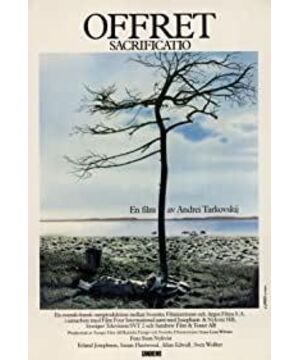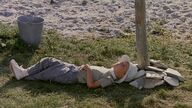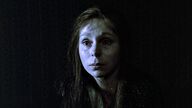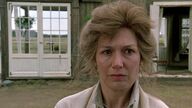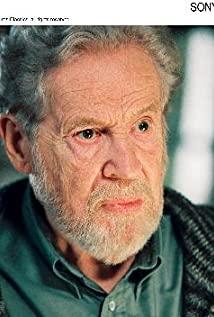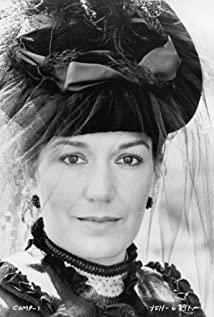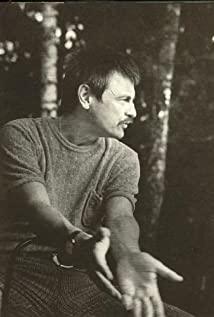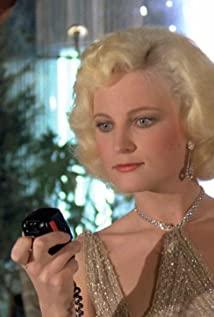"The best way to talk about something you love is to talk about it softly." - Albert Camus. An author trying to interpret Tarkovsky's films quotes this at the beginning of his book. 1 Tarkovsky's films strive for a sense of wholeness, and Tarkovsky himself has repeatedly and explicitly rejected attempts to dismantle the film into its various elements for in-depth analysis. Speaking of the "integrity of the image," Tarkovsky said: "It strikes us with its indivisible nature. The isolated component is itself dead, or it may be the other way around—every smallest constituent Elements reflect the characteristics of the entire complete work.” 2 But for film elements such as montage, mise-en-scene, actors, I think there is no problem in “softly speaking”: after all, any director can also describe his own film theory. We can only talk about these elements one by one, and Tarkovsky's "Sculpting Time" 3 is no exception. The focus of each director is different; in addition, as mentioned above, after all, "every smallest component reflect the characteristics of the entire complete work”, then under the premise of understanding the “integrity of the image”, it is quite possible to carefully analyze the actions of these elements of the film. On this premise, I very much agree with what Camus said. In fact, there is no need or even too much to say about any words... A brief description of Tarkovsky's life and creation 4 I only extracted those parts of the "documentary" 5 about Tarkovsky's life that I thought were important to make up this "microfilm" - Andrei Tarkovsky was born in Soviet Iraq in 1932. An intellectual family in the Vanovo region, the father was the poet Arseniy Tarkovsky, and the mother was Maria Ivanovna Vishchenyakova, a proofreader at a publishing house. The Tarkovsky family moved to Moscow that year. Tarkovsky's father abandoned the family in 1937, and since then Tarkovsky and his sister Marina have been raised by their mother alone. Tarkovsky's father lost a leg while participating in World War II. It can be said that the breakdown of the family in childhood and the shadow of war had a great influence on Tarkovsky. In 1940 the Tarkovsky family spent the summer at their villa in the village of Ignativo. This is also the location of the later "Mirror". From 1941 to 1943, the Tarkovsky family was turned around many times due to the war, and finally moved back to Moscow. In 1951 Tarkovsky entered the Moscow Institute of Oriental Languages after graduating from high school. In 1953 Tarkovsky left the language school and joined a geological expedition after realizing that his choice of major was reckless at the time. During the year he traveled to Eastern Siberia with a geological expedition, Tarkovsky strengthened his determination to become a film director. In 1954 Tarkovsky successfully entered the Moscow State Film Academy to study, under the tutelage of director Mikhail Rom. 7 In 1956 Tarkovsky married his first wife, Irma Rausch. In 1961, Tarkovsky graduated from the film school with his graduation work "Road Roller and Violin". In this 40-minute work, Tarkovsky has injected some elements like mirrors, apples, and reflections. After graduating, Tarkovsky also began to work in the Moscow Film Studio and was classified as a "three-category director". In the same year, the filming of the feature film debut "Ivan's Childhood" began. In 1962, "Ivan's Childhood" premiered and won the Golden Lion at the Venice Film Festival. However, the film was only shown on a small scale in the Soviet Union, which caused a lot of controversy, and Sartre defended it. In the same year, Tarkovsky's son Arseny was born. In 1965, he recorded a radio drama adapted from Faulkner's "Rotation", which was accused of having a tendency to "whitewash the peace". "Andrei Rublev" premiered in 1966, but the film was banned in the Soviet Union. In 1969 Tarkovsky began writing a diary entitled "History of Martyrdom". In 1970 Tarkovsky married his second wife, Larisa Kichirowa. same year taco Fsky's son Andrei was born. In 1971, "Andrei Rublev" was finally allowed to be shown in the Soviet Union, but the film had to be cut short. In 1972, "Flying to Space" (aka "Solaris", based on the novel of the same name) was licensed for distribution, which went on to win the Palme d'Or at the Cannes Film Festival. That year Tarkovsky was classified as a "director of the first category" by the Moscow Film Studio. In 1973, Tarkovsky planned to shoot Thomas Mann's novel "The Magic Mountain", and also adapted Alexander Bierev's novel "Ariel" into a screenplay. That year Tarkovsky suffered a heart attack. In 1974 "Mirror" was screened inside the Soviet Union of Film Workers, and the film later won the Italian David Award. That year Tarkovsky wrote the script outline for Dostoevsky's novel The Idiot. In 1975, "Mirror" was allowed to screen in three cinemas on the outskirts of Moscow, but was banned from the Cannes Film Festival. In the same year, Tarkovsky supplemented the outline of "Idiot" and wrote the play "Crazy Love Hoffman". In 1976, Tarkovsky and the Strugardsky brothers adapted the latter's novel "Roadside Picnic" into the screenplay "Stalker". After the first filming of Stalker in 1977, Tarkovsky insisted that there were "technical problems" and called for a second filming. That year, Tarkovsky's play "Hamlet" premiered at the Lenin Komsomol Theater. In 1978 Tarkovsky suffered another heart attack. In 1979, "Stalker" completed its second shooting. Tarkovsky's mother died of cancer that year. In 1980, Tarkovsky lived in Italy for a period of time, began to film the documentary "Journey Time" and completed the script of "Nostalgia". That year Tarkovsky was awarded the title of "Soviet People's Artist". In 1982, Tarkovsky went to Italy to start shooting Nostalgia. In 1983, "Nostalgia" missed the Palme d'Or, and Tarkovsky insisted that Sergei Bondarchuk, a judge arranged by the Soviet film department, was at fault. That year Tarkovsky was fired from the Moscow Film Studio for "away from office" and he was forced to live in exile. At this time, he also began to prepare the script for "Sacrifice". In 1984 Tarkovsky announced in Milan that he would not return to the Soviet Union. That same year Tarkovsky gave a speech about the end of the world. In 1985, "Sacrifice" was filmed in Sweden, "Carving Time" was published, and Tarkovsky was diagnosed with lung cancer. "Sacrifice" premiered in 1986. In January, Tarkovsky began to receive treatment in France. In December, Tarkovsky died in Paris at the age of 54. Tarkovsky's father died in 1989. In 1990 Tarkovsky was posthumously awarded the Order of Lenin. A Russian and Nostalgia: Tarkovsky is an artist first and foremost, and such a person has a specific self-identity. For Tarkovsky, the identity of the Russian nation is extremely important, and such an identity directly becomes a theme that runs through all Tarkovsky's films - the root. "For me, it is very important to identify the traditions, cultures, peoples, ideas to which I belong."8 "Andrei Rublev" shows the people of the Russian land under the trampling of the Tatar cavalry in the early 15th century The painter Lublev fell into huge contradictions while witnessing the suffering of the people. He was forced to serve the ruler, and finally created the masterpiece "Holy Trinity" after the war. The tone of this film is undoubtedly heavy, and this heavyness comes from the strong sense of national identity in Tarkovsky's heart. Russian director Sokolov once said: "As a country worthy of sympathy, in Russia, everyone needs help... The Russians have nothing - they lack everything and will continue to lack in the future."9 Forced into exile Later, Tarkovsky became a real foreigner and considered himself a "bad Russian expat." 10 But his foreign films are still and more focused on Russia. "I want to tell about Russian nostalgia - the mental state that is unique to Russians who are far away from the motherland. I want to tell about the fatal attachment of Russians to their national roots, history, culture, hometown and friends and relatives - the kind of Wherever we go, we are attached to life and death.”11 When Gorchakov, the protagonist of Nostalgia, “strongly realized that he was a bystander and could only look at the lives of others, he recalled the faces of his relatives and the voice of his hometown. And smell, he was defeated by thoughts..." 12 Tarkovsky is always looking for the possibility of a connection in the film, in the final analysis, this is the connection between man and man, man and earth. But in the later "Nostalgia", this connection becomes impossible: in the film's final shot, a Russian house is placed in an Italian church. Tarkovsky eventually became his character. An artist is first and foremost a person, and such a person has a specific self-identity. For Tarkovsky, the identity of the Russian nation is extremely important, and such an identity directly becomes a theme that runs through all Tarkovsky's films - the root. "For me, it is very important to identify the traditions, cultures, peoples, ideas to which I belong."8 "Andrei Rublev" shows the people of the Russian land under the trampling of the Tatar cavalry in the early 15th century The painter Lublev fell into huge contradictions while witnessing the suffering of the people. He was forced to serve the ruler, and finally created the masterpiece "Holy Trinity" after the war. The tone of this film is undoubtedly heavy, and this heavyness comes from the strong sense of national identity in Tarkovsky's heart. Russian director Sokolov once said: "As a country worthy of sympathy, in Russia, everyone needs help... The Russians have nothing - they lack everything and will continue to lack in the future."9 Forced into exile Later, Tarkovsky became a real foreigner and considered himself a "bad Russian expat." 10 But his foreign films are still and more focused on Russia. "I want to tell about Russian nostalgia - the mental state that is unique to Russians who are far away from the motherland. I want to tell about the fatal attachment of Russians to their national roots, history, culture, hometown and friends and relatives - the kind of Wherever we go, we are attached to life and death.”11 When Gorchakov, the protagonist of Nostalgia, “strongly realized that he was a bystander and could only look at the lives of others, he recalled the faces of his relatives and the voice of his hometown. And smell, he was defeated by thoughts..." 12 Tarkovsky is always looking for the possibility of a connection in the film, in the final analysis, this is the connection between man and man, man and earth. But in the later "Nostalgia", this connection becomes impossible: in the film's final shot, a Russian house is placed in an Italian church. Tarkovsky eventually became his character. An artist is first and foremost a person, and such a person has a specific self-identity. For Tarkovsky, the identity of the Russian nation is extremely important, and such an identity directly becomes a theme that runs through all Tarkovsky's films - the root. "For me, it is very important to identify the traditions, cultures, peoples, ideas to which I belong."8 "Andrei Rublev" shows the people of the Russian land under the trampling of the Tatar cavalry in the early 15th century The painter Lublev fell into huge contradictions while witnessing the suffering of the people. He was forced to serve the ruler, and finally created the masterpiece "Holy Trinity" after the war. The tone of this film is undoubtedly heavy, and this heavyness comes from the strong sense of national identity in Tarkovsky's heart. Russian director Sokolov once said: "As a country worthy of sympathy, in Russia, everyone needs help... The Russians have nothing - they lack everything and will continue to lack in the future."9 Forced into exile Later, Tarkovsky became a real foreigner and considered himself a "bad Russian expat." 10 But his foreign films are still and more focused on Russia. "I want to tell about Russian nostalgia - the mental state that is unique to Russians who are far away from the motherland. I want to tell about the fatal attachment of Russians to their national roots, history, culture, hometown and friends and relatives - the kind of Wherever we go, we are attached to life and death.”11 When Gorchakov, the protagonist of Nostalgia, “strongly realized that he was a bystander and could only look at the lives of others, he recalled the faces of his relatives and the voice of his hometown. And smell, he was defeated by thoughts..." 12 Tarkovsky is always looking for the possibility of a connection in the film, in the final analysis, this is the connection between man and man, man and earth. But in the later "Nostalgia", this connection becomes impossible: in the film's final shot, a Russian house is placed in an Italian church. Tarkovsky eventually became his character. The tone of this film is undoubtedly heavy, and this heavyness comes from the strong sense of national identity in Tarkovsky's heart. Russian director Sokolov once said: "As a country worthy of sympathy, in Russia, everyone needs help... The Russians have nothing - they lack everything and will continue to lack in the future."9 Forced into exile Later, Tarkovsky became a real foreigner and considered himself a "bad Russian expat." 10 But his foreign films are still and more focused on Russia. "I want to tell about Russian nostalgia - the mental state that is unique to Russians who are far away from the motherland. I want to tell about the fatal attachment of Russians to their national roots, history, culture, hometown and friends and relatives - the kind of Wherever we go, we are attached to life and death.”11 When Gorchakov, the protagonist of Nostalgia, “strongly realized that he was a bystander and could only look at the lives of others, he recalled the faces of his relatives and the voice of his hometown. And smell, he was defeated by thoughts..." 12 Tarkovsky is always looking for the possibility of a connection in the film, in the final analysis, this is the connection between man and man, man and earth. But in the later "Nostalgia", this connection becomes impossible: in the film's final shot, a Russian house is placed in an Italian church. Tarkovsky eventually became his character. The tone of this film is undoubtedly heavy, and this heavyness comes from the strong sense of national identity in Tarkovsky's heart. Russian director Sokolov once said: "As a country worthy of sympathy, in Russia, everyone needs help... The Russians have nothing - they lack everything and will continue to lack in the future."9 Forced into exile Later, Tarkovsky became a real foreigner and considered himself a "bad Russian expat." 10 But his foreign films are still and more focused on Russia. "I want to tell about Russian nostalgia - the mental state that is unique to Russians who are far away from the motherland. I want to tell about the fatal attachment of Russians to their national roots, history, culture, hometown and friends and relatives - the kind of Wherever we go, we are attached to life and death.”11 When Gorchakov, the protagonist of Nostalgia, “strongly realized that he was a bystander and could only look at the lives of others, he recalled the faces of his relatives and the voice of his hometown. And smell, he was defeated by thoughts..." 12 Tarkovsky is always looking for the possibility of a connection in the film, in the final analysis, this is the connection between man and man, man and earth. But in the later "Nostalgia", this connection becomes impossible: in the film's final shot, a Russian house is placed in an Italian church. Tarkovsky eventually became his character. Conclusion: In the last shot of the film, a Russian house is placed in an Italian church. Tarkovsky eventually became his character. Conclusion: In the last shot of the film, a Russian house is placed in an Italian church. Tarkovsky eventually became his character.
Generally speaking, a person's outlook on the universe determines the outlook on the world, the outlook on the world determines the outlook on life, and the outlook on life determines the values, which have names such as the outlook on art, the outlook on love, and the outlook on career. Of course, a person may not really be able to form a relatively complete set of these concepts. But for those who can really be called "artists", I think the above determination of different levels of concepts should be applicable. To talk about Tarkovsky's view of art, we must first look at what his outlook on the universe, world and life is like. There are problems of knowledge first, then problems of value. "From the moment Eve stole the apple from the tree of wisdom, mankind is doomed to struggle for the truth." 13 What Tarkovsky is after is an eternal ideal, he believes in absolute truth. Tarkovsky regards both art and science as "a cognitive tool on the path of human beings' pursuit of the so-called 'absolute truth'."14 "The artist has always been a servant, trying to repay the talent bestowed on him by God."15 Tower Kowski denies those doctrines that affirm the value of the individual and ignore the meaning of life, and he does not think that artists are free16, on the contrary, artists may be the least free people: "They are bound by their own genius and their mission - with their own The talents serve the public.”17 Tarkovsky always has a religious sense of mission and mystery, and he believes that only by realizing the equality of spirit and material can we eradicate certain contradictions between individuals and society. The embodiment of this contradiction is: "The relationship between people has become such that people have no demands on themselves, and they are divorced from moral efforts and turn their hopes on others and society. People always advise others to tolerate and sacrifice themselves. , and finally devoted himself to social construction, but he resolutely stayed out of it and avoided responsibility for everything that happened in the world.”18 Today’s human beings lack the spirit of sacrifice—“What I mean by sacrifice is the nature of voluntary service to others, the existence of The only possible form of love that man accepts naturally in the name of love." 19 Love is sacrifice! Love can only be realized in the connection between people! Love can only be unreserved! In "Sacrifice", "God's Chosen" Alexander, in order to save mankind, destroyed his homeland, abandoned his family, and finally denied language and fell into silence. He exchanged individual sacrifice for the redemption of human civilization and the possibility of spiritual harmony. But this is a beautiful ideal after all, and it may not be realized until the moment of "Apocalypse". The great artists of all dynasties have always been in the absurdity, that is, the gap between the artist's ideal and the cold reality: Tarkovsky was born in an era of utilitarianism and pragmatism, and material desires almost devoured the spiritual world. "The power of art It can consist in the absolute freedom of thought that expresses the potential of man's spirituality...Art has always been a tool for man to fight against the material that wants to devour his spirit...Art expresses man's need for harmony, and the struggle against self, with Willingness of one's own personality to struggle. "20 Tarkovsky also faced temptation in this struggle, but he never fell, he was loyal to himself all his life, and practiced his absolute spirit in action - such people are too few, in my It seems that such a person is a real artist. Unlike other human activities, art is selfless, and an artist exists in a meaningless and selfless creative activity. And the reality of the utilitarian world achieves the greatness of a real artist. Not difficult Understand that Tarkovsky's heaviness comes from nostalgia and sacrifice. Tarkovsky has been fighting, a real struggle in an absolute spiritual sense.
Going back to Tarkovsky's words that both art and science are regarded as "cognitive tools on the road of human beings' pursuit of the so-called 'absolute truth'". The next sentence of this sentence is "However, the similarity between these two forms of the human creative spirit is only so much. I dare to say that the creation (of art) here is not discovery, but creation."21 I Think, after understanding this sentence, it is easy to see why Tarkovsky said that he is one of two types of artists - "Artists can be divided into two categories. One creates its own unique world, The other is to reconstruct reality. I definitely belong to the former.”22 I guess Tarkovsky doesn’t even see the latter as real artists (they are more like scientists), he directs the practice of art with spiritual power, only by creating the world to get closer to the truth. As for how to create your own unique world, this is a matter of methodology, which will be discussed later. But those methodological issues such as film images, the logic of poetry, rhythm, and mise-en-scene should all serve the spirit in Tarkovsky's case, and this spirit is to a large extent a spirit of sacrifice. Selfless Confession: The Artist's Responsibility Just like his ideals, it may actually be not difficult for Tarkovsky to understand, and it can even be said that he is truly an artist with a childlike innocence. "I respect the audience and don't want to and can't deceive them: I trust them, that's why I decided to tell the most important and precious things to me... Just to give the audience the possibility of a deeply personal experience... The artist must be sincere, faithful, and innocent. It is the responsibility of the artist not to hide the reality he experiences.”23 I was actually surprised when I first read that Tarkovsky himself said that he presented a reality. His films are generally considered obscure, full of metaphors and symbols. Take a look at "Mirror". When I first saw this film, it was cloudy and foggy. It can be said that I was completely clueless. This work, in the character of Tarkovsky's private recollections, is a faithful record, the way in which memory really reveals itself in time: we remember the tender voice of our mother, whose words involve only ordinary little things, and we But it is difficult to remember the mother's face clearly, the mother's face is incomplete! A letter from an audience told Tarkovsky: "My childhood was like this... But how did you know? It was that wind, that thunderstorm, and grandma shouted: 'Galika, drive the cat!'"24 Tarkovsky has said that he tries to hide the author's personal tendencies as much as possible, and I believe he has always done so. "Mirror", which is regarded as the director's most personal work, is actually not private. What is recorded here is a commonality (Tarkovsky: equivalent human experience), which reflects the relationship between people The possibility of universal connection. This work is too simple, it expresses the memory itself. However, people use the theoretical formulas and symbol systems of various films to try to decode it and try to find out the symbolic meanings. Tarkovsky once said that it is difficult for him to understand this practice. Tarkovsky is simple, is it because we are not simple? Are critics and audiences spoiled by constructed rules like parallel montages, sideshow montages, reaction shots, cut-in shots, and the like? If you bring a primitive man to the big screen and show him the films of Tarkovsky and Eisenstein, I think it should be easier for the primitive man to understand the former. In the end, we thought that the naive "primitive" Tarkovsky was incomprehensible. In fact, his films are the real "naturalism"! Let's clear up those constructed "obstacles", let's revisit "The Mirror" with the eyes of a child! If these "barriers" are allowed to persist in our minds, is spiritual still possible? Is human worth still possible? also
Tarkovsky was skeptical of the identity of the so-called "synthetic art" of film, and he was always looking for the possibility of film as an independent art. "I have said that I am happy to see film and literature parting ways... Cinema will not only move away from literature, but also from other related art forms, and become more and more independent... Bringing the characteristics of other art categories to the screen will make film itself The characteristic loses its power.”26 What Tarkovsky wanted to get rid of was mainly the assumptions brought about by certain dramas and the tendency to rely too much on language brought about by literature, which were already in Eisenstein et al. Become the golden rule. But Tarkovsky is equally convinced that, like other arts, cinema is an author's art. But what are the characteristics of this author's art, that is, how does the film achieve true independence? Tarkovsky's answer is - "carve time". "The birth of a new aesthetic principle . It is the most important idea of cinema as art.”29 The way time is sculpted is to “cut out all the unnecessary parts from the huge chunk of time that contains the vast facts of life, leaving only the parts that can be the elements of the film, only the parts that can be clearly described part of the image of the film.”30 The idea of this “sculpture” is like that of Michelangelo: the “stone” is already there, the artist has a general idea of the work in his mind, and what remains after careful carving is the Well-chosen facts. Tarkovsky's ideal "stone" is as large as possible: "The ideal working situation in my mind is this, the author carries millions of meters of film, recording every minute and every second of a person from birth to death... …the final cut was 25,000 kilometers, or an hour and a half of screen time.”31 “Time in the form of fact” refers to the time inside the shot, not the time that is traditionally brought about by editing ( illusion): "Rhythm, which appears as the flow of time in the frame."32 "Montage—after all, is nothing but an ideal solution for arranging shots that already exists within the film of the material being shot."33 "What determines the rhythm of a film is not The length of the clip, but the tension of the time that flows through it... We call the tension or 'fluidity' of time that goes on in the shot, time pressure. In this way, the editing can be seen as a basis for The time pressures within the shots, the way they are arranged and combined...the same pressures that determine the pacing of the film have the potential to make the different shots convey the same feeling.
Poetic Logic and Cinematic Image: Tarkovsky's Film Theory "I am particularly fascinated by the inner connection of poetry in film and the logic of poetry. I think the potential of poetry and the most authentic and poetic art, film art, is very commensurate.”35 The image in traditional drama develops linearly with the plot, which is a kind of coherent logic. Tarkovsky believes that the logic of poetry is closer to human thinking, and the emotion of poetic narrative can stimulate the audience's initiative. It should be noted that Tarkovsky's denial of "poetic cinema" that is "disconnected from the concrete things that are common to life"36 is an indirect symbolism and metaphor that puts the film at "risk of losing itself. "37. Tarkovsky pursued directly observable facts, and Japanese haiku had a great influence on him - "What attracted me to haiku was its pure, accurate, and detailed observation of life. And the form was pure. The full moon passed by. When barely touched It's very pure observation..."38 The images in Tarkovsky's films are precisely these pure facts that are observed and flow through time. Rain is rain, tree is tree, nothing else, but there are more The meaning is contained in these images—“Symbols, in their inexhaustible and inexhaustible sense, express through cryptic (sacrifice and sorcery) speech, a connotation that cannot be conveyed by suggestion and verbal surface. is the real symbol. It has multiple faces, multiple meanings, and is always hidden in the deepest depths... The symbol is unspeakable, unexplainable, and we only feel helpless in the face of its overall sense. 39 These deeper meanings can only be felt or understood by the audience. "When one thing is not fully explained, it leaves room for the audience to think." "40 "Only from a holistic perspective can a film express its ideological reality with specific images. ”41 Tarkovsky’s films are simple and mysterious. When the audience is confronted with the overall sense of the image, they may be confused or ponder. Everything is left to the audience to judge. I think that Tarkovsky Key's other film theories and practices are based on his understanding of "poetic logic and film image", all of which are concepts and methods of carving time - editing to deal with the time pressure (rhythm) brought about by the specific image in the shot. ) Consistency issues. The script is only a rough outline of the scene and the shot, because the specific image should be produced naturally during the shooting process. 42 Colors should be as neutral as possible to avoid affecting the audience's perception of the image. Actors should be in a "can't pretend" ”, Tarkovsky even concealed some of the plot from the actors. The music resembles the refrain of poetry, and Tarkovsky tends to organize various sounds in nature with poetic logic to create “true film music”, He even thinks that the film does not need music. The mise-en-scene should try to present the truth of the performance, the beauty of the image, the depth of thinking, not the formalism. It cannot restrict the imagination of the audience. … Roots and Stalkers: Tarkovsky Films themes and characters "All the films I make have one main theme: roots. It's associated with my father's house, childhood, the earth." 43 "Almost all of his work expresses the search for the self - the search for the house of childhood , looking for the time in memory."44 The foundation of the characters in Tarkovsky's films is established. The first feature film "Ivan's Childhood" tells the pain of war from a personal perspective. The protagonist Ivan searches for his lost childhood. The second "Andrei Lublev" tells the war from a larger perspective, and the protagonist painter Lublev finds the true mission and responsibility of the artist. The third "Flying to Space" seems to be about exploring the universe, but it is actually returning to the earth. Tarkovsky later admitted that some novel elements of technology should not even be added to the film, because these elements interfere with the expression of the theme: the protagonist Kelvin eventually saw his late wife in the space station near Solaris. The fourth "Mirror" is the most daring and direct search for the mother in the narrator's memory. The fifth "Stalker" is about "human dignity, and the suffering of losing it." 45 "When our masters experienced, thought and reflected all the way, and finally reached their destination, they decided not to enter that room...they Their minds are elevated and they realize their tragic imperfection. They don’t have enough power inside to believe in themselves—but they have enough courage to look into themselves and be horrified!”46 Before Stalker , personal value has not yet been reflected: Tarkovsky either denied or ignored this possibility. Beginning with Stalker, "For the first time, I felt the need to firmly articulate the primary value of man, which is, as everyone says, what man lives for."47 After that, Tarkovsky began to do more carefully. Subtraction, removing all those elements that he thought would affect the expression of the theme: "What I pursue is the simplicity and simplicity of the structure of the whole film."48 He acknowledged the necessity of three uniforms49, and it can be found that almost all of his later films were Trinity is followed. Personally speaking, my favorite of all Tarkovsky's works is "Stalker". The works before it are a little more complicated, and the works after it seem to be simplified. There are not many "Stalkers". Quite a bit, there are more possibilities in that kind of "masterpiece" offering. The sixth "Nostalgia" expresses the nostalgia of Russians in a foreign land. As a "bystander", when the protagonist poet Andrei finds the connection impossible, he turns to the past to find it. The last "Sacrifice" turns to the future: "When all signs clearly indicate that the end of the world is coming, is there any hope for mankind to live? ? 50 Tarkovsky seems to have regarded himself as a poet like Pushkin: "He (Pushkin) thinks that the poet (I have always thought of myself more like a poet) is a prophet, whether he wants to ... see through time and space, Predicting the future is a terrifying gift, destined to suffer for its mission. 51 It was the year of the completion of "Sacrifice" that Tarkovsky left this world, but was forever connected to this land, facing the past and eternity. I regard all Tarkovsky's protagonists as "sneak" "Stalker" - always looking for yourself on the road. As Tarkovsky said, "Stalker" is also "weak". "I have always liked people who can't adapt to the real utilitarian life. There are no heroes in my films, but there are always men of faith... children with adult passions. "52" I am most attracted to the drive against substances in human nature. 53 Rublev sees the world with "child-like undefended eyes", the weak stalker "confronts the world polluted by pragmatism" with firm belief, and the madman in "Nostalgia" uses self-immolation to warn that mankind is heading for a The road that was destroyed by madness, although it has long been powerless to restore...
Since I know very little about religion and related situations, the content of this chapter can only be said to be some rough thinking or conjecture of mine. But there is no doubt that Tarkovsky's work has a very heavy religious atmosphere, so sacrifice (as a spirit) needs to be discussed. For Tarkovsky, who was born in Orthodox Russia and grew up in a strong religious atmosphere, I think from a certain early stage, Tarkovsky already had a real belief, which is related to love. , is unconditional. I've always felt that true art is similar to religion: either accept it or reject it, and there is no other way. But real artists and believers always keep thinking about some kind of spiritual transcendence after conversion. They keep challenging themselves, even denying themselves, and finally try to find a way to the truth: Tarkovsky uses universal love The name opens this road, and finally leads to the end of this endless road with self-sacrifice... At last he returns to God... Tarkovsky's work has always involved sacrifice. His first feature film, The Childhood of Ivan, was inspired by a forgotten documentary: "Tarkovsky browsed through the archives until he found a video about 11 minutes long. , an exhausted Red Army soldier trudging through the muddy shoals of Lake Sivash in an emotional impact comparable to that of the 12-year-old heroine in "Ivan's Childhood" The scene of passing through an uninhabited swamp and reaching the German front.' I watched several kilometers of film before I found this record of Soviet soldiers passing through the Siwash Lake, which is very shocking... Through the screen in front of you, you It was as if I could feel the pain of these people. They were the victims of that dark, inhuman tragedy of history. So I knew that this video had to be the heart of this film.'"54 As one might guess, the young Tower Kowski wanted to use his actions to awaken the people around him, in the name of universal love that must illuminate the people of God long forgotten by history. Spiritual exploration is accompanied by the power of action. From "Ivan's Childhood" to "Stalker", Tarkovsky has walked on the land of Russia with his arrogant self-esteem for 20 years. He is well aware of his responsibility and mission as a prophet... But with the passage of time, many changes have taken place in the mood of the poet, who knows that he has entered the dying years and has long been in a foreign land, and Tarkovsky seems to have fallen into a kind of despair. It is conceivable that the madman in "Nostalgia" once used his enthusiasm to burn this cold world in an attempt to warm the spirit of others. However, in the end he failed, in the condensed eyes of countless indifferent eyes The madman becomes the madman. In the end, the madman knew that he could not stop the world from going to the end of madness, and he burned himself for the last time - the madman set himself on fire under the statue of Marcus Aurelius 55. And Alexander in "Sacrifice", he sacrificed everything he had, and finally fell into silence and returned to God. Tarkovsky, in the end, also burned himself. He loved, he was silent, he sacrificed. Tarkovsky, always his own character. Thinking about these questions, I think, it's not hard to guess why Tarkovsky used in his last two works the forms he once objected to: indirect symbols and metaphors. The last shot of "Nostalgia" and the tree in "Sacrifice" are examples of this. “The first scene—planting the tree, and the last—watering the dead tree, to me symbolizes faith itself.”56 “Artists can both make and break the rules. Not many works of art can Just to incorporate the theory that the artist preaches... Will my theoretical framework become my own shackles?"57 The question of form was never really a big problem for Tarkovsky.
The audience has a huge impact (i.e. conflating life and film) as much as a real movie can do for a demanding audience... People will stop needing nice, spiritual movies, they want movies like Coca-Cola. 72 "Under various regimes, the bulk of the audience is fed horrific substitutes, and the cultivation and enhancement of their tastes are not valued." "73 "An artist has no right to photograph something that he himself is not interested in at all. "74 "Unfortunately, many contemporary producers do not support the auteur's film, they do not see the film as art, but as a tool to make money, film is just a commodity. In this sense, "Sacrifice" is a radical rebuttal to today's commercial cinema. My film is not intended to support or oppose a single instance of modern thought or way of life; my primary desire is to raise and expose the growing problems of our lives, and to call attention to the ever-drying wellsprings upon which we live. 75 These arguments by Tarkovsky are not outdated today, and even more “modern”: the problem is still there, the basic understanding of the industry has never changed. Tarkovsky never wanted to educate the audience, put the He is an artist who really pays attention to the audience by imposing opinions on others. In fact, real art is like religion. As an audience, you can either choose to believe in it or simply ignore it. To criticize art films from the perspective of commercial films or life, there is no point in criticizing art films. The meaning is also not desirable; and it is unnecessary and impossible to use the artist's criteria to demand commercial films. Comments on Tarkovsky "At first sight of Tarkovsky's films is a miracle. Suddenly, it was as if I was in front of the door of the room, but I never got the key to the house. I've always wanted to go into the room and find out, but Tarkovsky can walk in it at ease. I feel inspired and motivated: it turns out that someone has expressed an emotion that I've always wanted to express but couldn't. Tarkovsky is great. He created a brand-new film language, truly entered the essence of film, and captured life like a reflection and a dream. 76 - Ingmar Bergman I would have liked to quote some other directors, critics and even philosophers, of course there are countless praises for Tarkovsky, but I can't seem to find any more. A representative evaluation has been written... at the end My article is just out of context and some immature understandings. Friends who really love Tarkovsky should read his book "Sculpting Time", I believe this book is very helpful for "overall" feelings his movies. He ends the book by writing: "I very much hope that the readers of this book will become my intellectual fellows, even if only in part, if only to thank me for not having any reservations about them." How sincere! This article is dedicated to honoring Andrei Tarkovsky, the true artist, poet, and film director in my heart. 2021/9/1-9/4 Notes: [1] Jeff Dyer's "Stalker: The Ultimate Journey About Movies": In the book, the author tries to use words to restore every aspect of Tarkovsky's film "Stalker" a picture, and interpret the metaphors and symbols in it. [2] Andrei Tarkovsky: "Sculpting Time", Nanhai Publishing Company, 2016, p. 118 [3] Tarkovsky's own book, which contains the director's own comprehensive account of his own film creation Awareness and reflection. [4] References include: Andrei Tarkovsky et al. "My Immortality is Enough: Tarkovsky's Graphic Collections" (Democracy and Construction Press 2020), Robert Bird's "Ender Lie Tarkovsky: The Elements of Cinema" (Nanjing University Press 2018) and some information on the Internet. [5] I know that if Tarkovsky himself is willing to make a biopic of his life, then his ideal way must be to follow and film his entire life every moment, and finally, for hundreds of years. Some very small fragments were cut out from 10,000 kilometers of film. (Even only select a fragment that conforms to the "three uniforms") [6] It can be said that if there is no poet father Arseniyi, there will be no film poet Andrei. [7] Soviet directors have inspired many directors of the "thawed generation". [8] Andrei Tarkovsky: "Sculpting Time", South China Sea Publishing Company, 2016, p. 207 [9] Andrei Tarkovsky, etc.: "My Immortality Is Enough: Taco "Anthology of Democracy and Construction", Democracy and Construction Press, 2020 [10] [11] Andrei Tarkovsky: "Sculpting Time", Nanhai Publishing Company, 2016, p. 215 [12] Ender Lie Tarkovsky: "Sculpting Time", South China Sea Publishing Company, 2016, p. 218 [13] Andrei Tarkovsky: "Sculpting Time", South China Sea Publishing Company, 2016, p. 34 [ 14] Andrei Tarkovsky: "Carving Time", Nanhai Publishing Company, 2016, p. 35 [15] Andrei Tarkovsky: "Carving Time", Nanhai Publishing Company, 2016, Page 36 [16] The freedom here should refer to the kind of personal, selfish freedom that is traditionally understood. On the other hand, Tarkovsky also believes that freedom is "sacrifice for love". In this sense, artists should be the most free people again. [17] Andrei Tarkovsky: "Sculpting Time", South China Sea Publishing Company, 2016, No. 1 78 pages [18] Andrei Tarkovsky: "Sculpting Time", South China Sea Publishing Company, 2016, p. 251 [19] Andrei Tarkovsky: "Sculpting Time", South China Sea Publishing Company , 2016, p. 253 [20] Andrei Tarkovsky: "Sculpting Time", Nanhai Publishing Company, 2016, p. 257 [21] Andrei Tarkovsky: "Sculpting Time" , Nanhai Publishing Company, 2016, p. 35 [22] Andrei Tarkovsky: Sculpting Time, Nanhai Publishing Company, 2016, p. 130 [23] Andrei Tarkovsky: Sculpting Time, Nanhai Publishing Company, 2016, pp. 198-203 [24] Andrei Tarkovsky: Sculpting Time, Nanhai Publishing Company, 2016, p.5 [25] Andrei Tarkovsky · Tarkovsky: "Sculpting Time", South China Sea Publishing Company, 2016, p. 136 [26] Andrei Tarkovsky: "Sculpting Time", South China Sea Publishing Company, 2016, p. 18 [27 ] The Soviet director, film theorist, and representative of the so-called montage school, his theories of "sideshow montage" and "1+1>2" are exactly what Tarkovsky opposed. 【28】Andrei Tarkovsky: "Carving Time", Nanhai Publishing Company, 2016, p. 62 【29】Andrei Tarkovsky: "Carving Time", Nanhai Publishing Company, 2016 , p. 63 [30] Andrei Tarkovsky: "Sculpting Time", South China Sea Publishing Company, 2016, p. 64 [31] Andrei Tarkovsky: "Sculpting Time", South China Sea Publishing Company, 2016, p. 65 [32] Andrei Tarkovsky: "Sculpting Time", Nanhai Publishing Company, 2016, p. 125 [33] Andrei Tarkovsky: "Sculpting Time" Time, Nanhai Publishing Company, 2016, p. 126 [34] Andrei Tarkovsky: Sculpting Time, Nanhai Publishing Company, 2016, pp. 128-129 [35] Andrei Tarkovsky Kowski: "Sculpting Time", Nanhai Publishing Company, 2016, p. 15 [36] [37] Andrei Tarkovsky: "Sculpting Time", Nanhai Publishing Company, 2016, p. 66 [ 39] Andrei Tarkovsky: "Carving Time", Nanhai Publishing Company, 2016, p. 46 [40] Andrei Tarkovsky: "Carving Time", Nanhai Publishing Company, 2016, p. 16 [41] Andrei Tarkovsky: Sculpting Time, South Sea Publishing Company, 2016, p. 191 [42] This is what Tarkovsky wrote about the way he approached scripts later in his career idea. 【43】Andrei Tarkovsky: "Sculpting Time", South China Sea Publishing Company, 2016, p. 207 【44】Andrei Tarkovsky, etc.: "My Immortality Is Enough: Taco "Anthology of Democracy and Construction", Democracy and Construction Press, 2020 [45] Andrei Tarkovsky: "Sculpting Time", Nanhai Publishing Company, 2016, p. 210 [46] [47] Ender Lie Tarkovsky: "Sculpting Time", Nanhai Publishing Company, 2016, p. 211 [48] Andrei Tarkovsky: "Sculpting Time", Nanhai Publishing Company, 2016, p. 209 [ 49] The theory of dramatic structure requires that the creation of a play maintain consistency among time, place and plot. That is, the story told in a play is required to take place within a day, the location is in a scene, and the plot is subordinate to a theme. 【50】Andrei Tarkovsky: "Sculpting Time", Nanhai Publishing Company, 2016, p. 247 [51] Andrei Tarkovsky: "Sculpting Time", Nanhai Publishing Company, 2016 , p. 234 [52] Andrei Tarkovsky: "Sculpting Time", South China Sea Publishing Company, 2016, p. 221 [53] Andrei Tarkovsky: "Sculpting Time", South China Sea Publishing Company, 2016, p. 223 [54] Andrei Tarkovsky et al.: "My Immortality Is Enough: Tarkovsky Textbook", Democracy and Construction Press, 2020 [55] Rome Emperor, philosopher, and representative of the Stoics. 【56】Andrei Tarkovsky: "Carving Time", Nanhai Publishing Company, 2016, p. 239 [57] Andrei Tarkovsky: "Carving Time", Nanhai Publishing Company, 2016 , pp. 227-229 [58] [59] Andrei Tarkovsky: "Sculpting Time", South China Sea Publishing Company, 2016, p. 87 [60] Andrei Tarkovsky: Sculpting Time, Nanhai Publishing Company, 2016, p. 109 [61] Andrei Tarkovsky: Sculpting Time, Nanhai Publishing Company, 2016, p. 177 [62] Andrei Tarkovsky Fsky: "Sculpting Time", South China Sea Publishing Company, 2016, p. 178 [63] Andrei Tower
View more about The Sacrifice reviews


